The Face of Nintendo
For the past thirty years, Mario has been Nintendo’s mascot and has starred in numerous installments and spin-offs. But how was he created? Who created him? Why was he created? That’s what today’s Editorial Tuesday will answer.
Donkey Kong

Mario made his debut in 1981 in Donkey Kong for the arcade. However, his name wasn’t Mario nor was he a plumber. As most of you hardcore fans know, his original name was Jumpman and he was initially portrayed as a carpenter since the levels resembled construction sites. When Shigeru Miyamoto conceived the character, he created him in a manner that he wanted to use him in a good majority of his future games in the same token that Alfred Hitchcock would cameo in his films, and the success of Donkey Kong paved way for that.
In its initial development, his name was Mr. Video and as it progressed, Miyamoto came to the realization it wouldn’t stick. The name Jumpman was used because he jumped and a good number of products at the time were using the man suffix such as Pac-Man and the Sony Walkman. He was eventually given the name Mario in tribute to Mario Segale, the landlord of a Seattle warehouse Nintendo was using at the time after he fiercely demanded overdue rent from Nintendo of Japan.
As for Donkey Kong’s conception, Nintendo originally wanted to make a game based on the classic Popeye cartoon but they were unable to secure the rights. The concept of a hero trying to save a girl from a villain was simply modified to what Donkey Kong is now. Mario, or Jumpman, is a substitute for Popeye as Donkey Kong and Pauline is a substitute for Bluto and Olive Oyl. The game offered unique obstacles, distinct graphics, and intricate designs for its time. Due to the technological limits of the early-1980s, Miyamoto designed the character in a manner that would be easy for players to see, which is why he gave him red overalls, a blue undershirt, and a mustache. As for why he gave him a hat, he didn’t want to bother doing animations for hair so he thought it was convenient to give him one.
The name Donkey Kong itself is a simple story of using Donkey to represent something stupid or silly, while Kong is obviously a nod to King Kong (which resulted in a lawsuit filed by Universal that favored Nintendo), and was a Japanese slang term for a gorilla at the time. While Miyamoto worked on the artistic aspects of the game, Gunpei Yokoi worked on the technical side of things and taught Miyamoto the ins and outs of game design. Upon release, it was an instant hit and was ported to the Game & Watch, the Atari 2600, the Apple II, the Commodore 64, and would eventually get an NES/Famicom release.
Mario Bros.
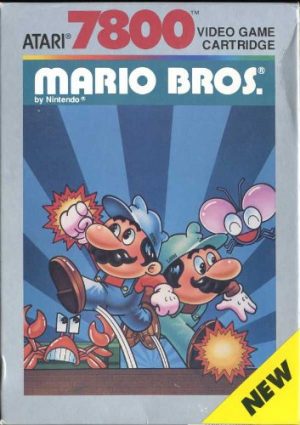
In 1983, Nintendo released Mario Bros., which was the debut of Luigi, and offered two-player co-op. As opposed to Donkey Kong where if Mario fell he would lose a life, at the recommendation of Yokoi, Mario would freely jump in this game. Instead of saving Pauline from Donkey Kong, Mario and Luigi would fight various turtle-like enemies (who would later come back in Super Mario Bros.) in the sewers. As a result, Mario was retconned as a plumber. While most Mario games allow players to have him jump on most enemies, this isn’t the case in the first Mario titled game. As opposed to jumping on them, if they are on a platform above Mario or Luigi, the plumber brothers can jump from below and have enemies land on their back. Before a downed enemy can regain position, the player can then kick them off the stage.
Despite being released in the US nearly around the same time as the video game crash of 1983, it managed to find success in American arcades. Since then, many elements of this game would carry over to later Mario games such as the coins, POW blocks in Super Mario Bros. 3, and its use of Mozart’s compositions in Mario DDR and Smash Brothers.
Super Mario Bros. and the Nintendo Entertainment System
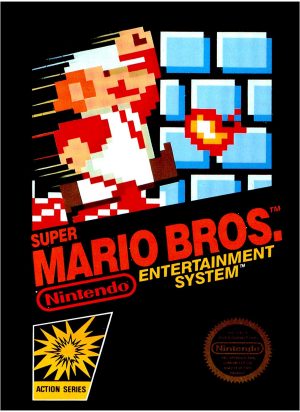
If any game solidified Mario to what it is today, it is without a doubt, Super Mario Bros for the NES. It took some foundations from its predecessors such as the character, his jumping abilities, exploring pipes, and saving a girl, and dialed it to over 9000. It introduced the Mushroom Kingdom, Bowser, Goombas, mushrooms, one-ups, fireballs, and invincibility stars. In addition, the first level of the game was designed for gamers to learn as they play along and still offer unlimited fun. While Mario is usually positioned near the middle, the level begins with him on the left side of the screen and by offering so much space on the right, it gives players the impression they just simply have to move him right.
Last, it introduced its iconic theme song composed by Koji Kondo, along with a lot of other enjoyable tracks that are still with the franchise to this day. This was the game that became the standard for not just the NES or Mario, but to 8-bit platform games as a whole in terms of playability, design, and sound. The game defined what the Nintendo could do and made it a must-have for every child in every territory the console was available in.
The Ongoing Evolution of a Franchise
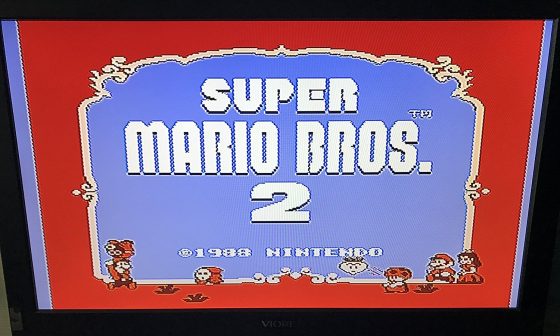
It was only natural that the game would be followed up with a sequel but the US and Japan had different notions of what it should be. Japan’s Super Mario 2 was pretty much Super Mario 1 but with harder obstacles such as the introduction of poison mushrooms, wind resistance, and level warps that can send you back! The officials at Nintendo of America thought the game was too complicated and instead, modified another Japanese Famicom Disk title, Doki Doki Panic, as the American Super Mario Bros. 2. In turn, the North American Super Mario Bros. 2 would later be released in Japan as Super Mario USA. The Japanese Super Mario Bros. 2 would eventually get a US release through the Super Mario All-Stars pack on the Super Nintendo as The Lost Levels in 1993.
The US Super Mario Bros. 2 offered players the option to play as Mario, Luigi, Toad, and Princess Toadstool (who would later be re-named as Peach), who each had their own distinct abilities. For example, Princess Toadstool had limited floating for her to leap across huge gaps. The game provided many qualities that were fresh such as lifting enemies and/or objects and throwing them, which would be carried over to future installments, and it also introduced other iconic villains such as the Bob-ombs and Shy Guys.
Multimedia Hit
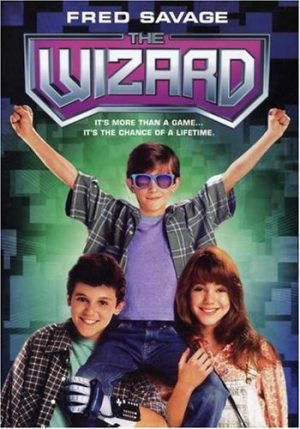
Mario became popular to the point that he was a multimedia icon. He had his own cereal, manga series, an animated show, and a live action movie. The 1980’s animated program, The Super Mario Bros. Super Show, used elements from the first two Mario games in terms of design, soundtrack, and villains. Many episodes spoofed classic children’s literature such as Jack and the Beanstalk, as well as the movies of the 1980’s like Robocop. Original broadcasts would also play insert songs such as Michael Jackson’s Thriller and Danger Zone by Kenny Loggins, but would, unfortunately, be removed from the DVD releases.
Wrestling legend Captain Lou Albano was the voice of Mario while former Jeffersons actor Danny Wells voiced Luigi. Not only did they provide their voices, they portrayed the characters in live action segments where they would have celebrities of the times guest star. In addition to Captain Lou’s wrestling friends such as Sgt. Slaughter and Roddy Piper having guest roles, Wonder Years’ Danica McKellar, NBA legend Magic Johnson, and Cyndi Lauper (Captain Lou actually portrayed her father in the Girls Just Wanna Have Fun music video) were also respectable guests on the show.
When it came to Super Mario Bros. 3, which was delayed at the end of the eighties, Nintendo of America thought it would be a good idea to first promote it through a movie after Tom Pollack of Universal Studios approached the company on making a movie about some of Nintendo’s hit competitions. Despite Nintendo and Universal’s legal history in regards to Donkey Kong just earlier in the decade, both companies put that aside to make a road trip movie called The Wizard, starring Fred Savage, Christian Slater, and Beau Bridges.
While it is obvious that The Wizard was a glorified commercial for Nintendo (especially for the Power Glove, it’s so bad), it was the West’s introduction to Super Mario Bros. 3, which wouldn’t be released until the following year. The movie even showed audiences how to find the first warp before they could get it (keep in mind this is a bit before the age of the internet)! While the movie is still a cult hit to gamers of that generation, it was their first taste of Super Mario Bros. 3 and it helped pave way for its hype and success. But the game wasn’t successful because of The Wizard, it was successful for just being an awesome game. Other than making Mario big or shoot fireballs, he could finally fly, swim, or turn into a statue. These new abilities added new ideas in overcoming the game’s obstacles.
And we can’t ignore the controversial 1993 live-action film co-starring Bob Hoskins and John Leguizamo. While many Mario fans and even Bob Hoskins and John Leguizamo were critical of the movie, the 20th-anniversary issue of Nintendo Power felt it deserves some acknowledgement showing that it was proof of Mario’s impact on pop culture. Miyamoto has also expressed a more forgiving attitude in regards to the movie by saying that despite getting everything wrong, the people put all they got into the movie. And after over 25 years, Universal and Illumination are once again going to make a Mario movie but as a CG movie with the expectations that it will accurately reflect the franchise.
Keep on Plumbing
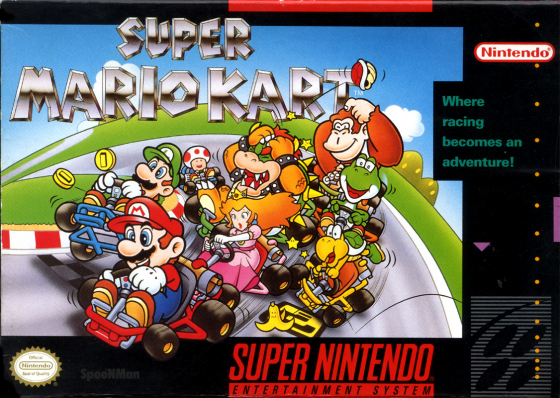
After the NES, Mario continued to be the face of Nintendo’s next generation of consoles and break new milestones. Super Mario World finally introduced Yoshi, who was conceived as far back as the first game but wasn’t possible due to the NES’ hardware limitations. Just like how the original Super Mario Bros. game was used to showcase the power of the NES, Super Mario World did the same for the Super NES by demonstrating its bright color sprites and unique sound effects.
The Super NES console would also be the start of one of Mario’s biggest spin-offs, Super Mario Kart. While Mario had some previous spin-off games such as Mario Golf and Dr. Mario, Super Mario Kart took the franchise to new heights. Along with F-Zero, Super Mario Kart would be one of the first games to showcase the system’s Mode 7 graphics features by allowing fast-paced vertical scaling, which was necessary for a racing game like Mario Kart. Beyond being your standard racing game, it used gimmicks appropriate to the Mario franchise such as using mushrooms for boost, invincibility stars, and turtle shells to attack other racers. All of these features continue to be in use to this day through its sequels. Then towards the end of the Super NES’ prime, it would feature Mario in his first RPG, Super Mario RPG: Legend of the Seven Stars, which would help expose Western gamers to Japanese style RPGs prior to Final Fantasy VII popularized it. Many gamers and reviewers loved its original story and its unique humor.
As for Mario as he is today, all of that is thanks to Super Mario 64, the first ever 3D Mario game. Not only was he in 3D in style, but in substance. It was one of the first games with analog controls meaning if you slightly press the joystick, Mario would simply walk but push it all the way forward, he would run. The game introduced new kinds of physics with Mario’s triple jump, his flying, his atomic butt drop in mid-air, and his long jump. Plus, the game allowed players to modify its camera through the c-buttons for players to easily see and navigate. Just like how Mario was the long standard for 2D between the eras of the NES and Super NES, it once again became a standard for 3D. Just like how the Super NES was the debut console for Mario Kart, the N64 was also the debut for another long-running Mario spin-off, Mario Party, which also continues to this very day.
New Super Mario Bros. sort of takes Mario back to his roots as an old-school platform but as a 3D side-scroller. Naturally, it takes the game to new and yet, fun exaggerations about how big Mario can grow and introduce new physics that play a part in the game to keep it fresh. It provided a balance between new and old players alike to enjoy. Then with Mario Maker, it allowed fans to design their own levels and share them online. Some have been creative, others that pay homage to other old-school platform games such as Mega Man, and some are just simply not safe for work or for households that have children. In addition to designing the levels, players can decide where to place the enemies, coins, power-ups and so on. It simply allowed players to just make their own Mario game as they explore it from a creative perspective.
If any game served as a true sequel to Mario 64, it would certainly be the two installments to Super Mario Galaxy where Mario explores various planets. Beyond its unique presentation, many hardcore fans responded well to newly introduced Rosalina who felt like a breath of fresh air, and its upbeat orchestral soundtrack that Kondo felt captured its outer space setting. Galaxy 2 took it to a new level of creativity by not only reintroducing Yoshi but also giving Mario unique power-ups that suit the gimmick of that aspect of the franchise such as drilling from one end of the planet to another.
Final Thoughts
Upon uploading of this Editorial Tuesday, the latest release of Mario is Mario Odyssey for Nintendo’s present console, the Switch. Its main feature is Mario’s possessed hat, Cappy, which allows him to possess his enemies and guide him through the level. In addition to being the standard 3D, it has some 2D gimmick levels that are a throwback to its NES roots. Not only is it a tribute to its predecessors, it still manages to offer something fresh, which is why the series continues to endure.
The fact that Miyamoto found success with his initial intentions shows that he played his cards right. Mario isn’t just the face of Nintendo, he’s the face of modern gaming itself. It’s a franchise that not only defines longevity but leaps of improvement for each release. Beyond being just your typical hero who has to save the princess, he can also be a doctor, a golfer, a tennis player, a go-kart racer, a boxing referee, or an Olympic athlete. Not only has Mario gotten his own personal spin-offs, other characters such as Luigi, Peach, Yoshi, his evil counterpart Wario, all have games where they are playable as main characters as well.
Just like how Mickey Mouse, Bugs Bunny, Superman, and Spider-Man have endured generation after generation since their debuts for animation and comics, Mario has done the same for video games. He’s now just as recognizable as these mentioned characters to a majority of people around the world. While Mario Odyssey introduces a level that represents something akin to urban New York, what is the next step Mario can take? We probably won’t know for a while, but all we can hope is that it will be something new, creative, and fun.
Recommended Post
Top 10 Indie Games for Nintendo Switch [Best Recommendations]
Recommended Post

